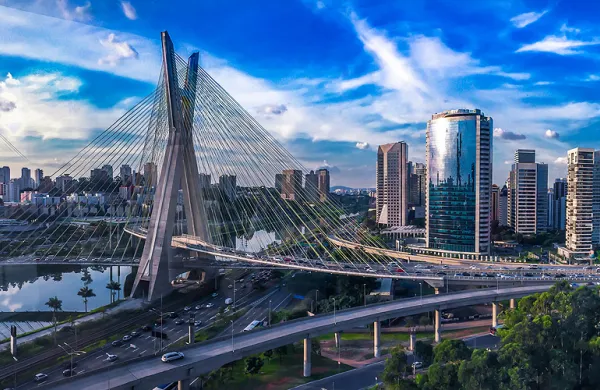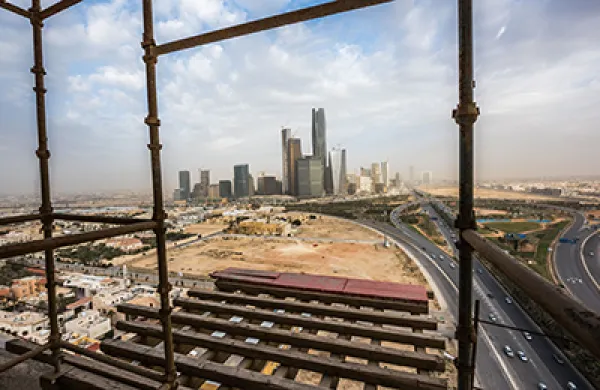To view a PDF of the full report, click here. By Matthew Thomas / The Philippines has emerged as one of the best-performing economies in Asia over the last few years. The country’s gross domestic product grew by 5.8 percent in 2015, according to the Philippine Statistics Authority. Economists at the International Monetary Fund think the growth rate will hit 6 percent this year and 6.2 percent in 2017. Inflation is low, unemployment is falling, and construction investment is growing at a breakneck pace.
The country clearly stands out from its neighbors. While central banks in Indonesia, Thailand and Malaysia have all eased monetary conditions over the last 12 months, the talk in the Philippines has instead turned to when the Philippine central bank will hike rates. (But many economists think that will not happen until 2017.)
The Philippines was not always in such a rosy position. After Benigno Aquino III was elected as president in May 2010, the economy suffered five straight quarters of falling growth, as the new government struggled with a bloated budget and a drop in export demand from Japan after the Fukushima disaster. But as the global environment has improved, and the government’s reform efforts have spurred a big jump in investment, the Philippines has turned a corner.
The country is benefiting, in part, from the same factor that hurt it in the past: It does not have a direct reliance on China for growth. Instead, Japan has long been its major trading partner. Philippine exports to Japan were worth $6.17 billion during the first half of last year, compared to $4.43 billion of exports to the United States and $3.07 billion to China. But even more important to the Philippine growth story is the impact of domestic demand, in particular a surge in investment. The Philippines had an export-to-GDP ratio of just 28.7 percent at the end of 2014, according to World Bank data. That is less than half the ratios seen in Thailand, Malaysia and Vietnam.
“The remarkable thing is that the Philippines has accelerated growth throughout 2015 despite experiencing the same external pressures as everyone else,” says Christian de Guzman, an economist at Moody’s Investors Service. “Domestic demand has provided a nice offset to some of those external headwinds. You cannot say the same thing about other southeast Asian economies.”
Spot the difference
The biggest source of uncertainty for investors in the Philippines at the moment is the upcoming Presidential election, which will be held on May 9. President Aquino, who has made infrastructure development and fiscal discipline a major part of his policy focus, will step down after serving the six-year term that all Philippine presidents are limited to. Exactly who will replace him is too close for pollsters to predict at the moment. Senator Grace Poe, the adopted daughter of former presidential candidate Fernando Poe Jr., won the support of 26 percent of respondents in a recent PulseAsia poll, compared to 24 percent for current Vice President Jejomar Binay, 22 percent for Davao City mayor Rodrigo Duterte, and 20 percent for interior secretary Mar Roxas.
It should perhaps not come as a great surprise that the election is so close. Because although there are surely policy differences between these candidates in some areas, most market participants admit that it is hard to figure out exactly what those differences are.
“The focus of the election has been on personalities so far,” says de Guzman. “These candidates aren’t running on a policy platform. No-one really knows what the differences between them will be.”
There also are questions about who. questions about who will manage the country’s monetary policy in the future. The central bank of the Philippines has been run by Amando Tetangco for the last nine years. He is the first person to have served two terms in charge of the central bank. It remains to be seen who will take the job when the new President takes residence in Malacanang Palace.
The infrastructure focus
President Aquino has made public-private partnerships a focal point of his policy over the last six years. The government has approved 12 PPP deals already and has plans to approve around 10 more before Aquino leaves office. But some market participants think the government could do much more, including taking a more direct role in infrastructure development.
“Government finances are in much better shape now,” says Jesse Ang, principal investment officer at IFC in the Philippines. “The way government spends money is much more coherent and much more efficient. It is time for the government to think about investing more in infrastructure, rather than relying primarily on private sector involvement.”
This would certainly help speed the pace of projects along, but most economists agree that private sector involvement in the infrastructure sector could still be improved. That could come by allowing more foreign companies to take a hand in new projects. It will also mean ensuring that the new administration has a good relationship with the key infrastructure companies in the Philippines at the moment.
“We foresee a better relationship with the next administration, given the lack of infrastructure development in the country,” says Albert Pulido, vice president of investor relations at Metro Pacific Investments Corp. “If they want to develop the infrastructure network, they’re going to have honor existing contracts, and be more proactive about putting out projects.”
It is no secret that infrastructure development is essential to the continued growth of the Philippine economy. In interviews, bankers and economists complain of being stuck for too long in Manila traffic. Gridlock has become a major talking point in the country. The good news is that these problems are so obvious that some economists think they simply cannot be ignored by the next administration.
“There is an assumption in my forecast that the investment upswing will be sustained and carried forward by whoever the next President is,” says Nafte. “That is a big assumption, but the basis for that is that there is no real alternative. The economy is bumping up against capacity constraints. That is going to push whoever takes power to do what it takes to keep up investment growth.”





